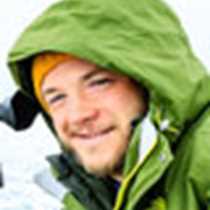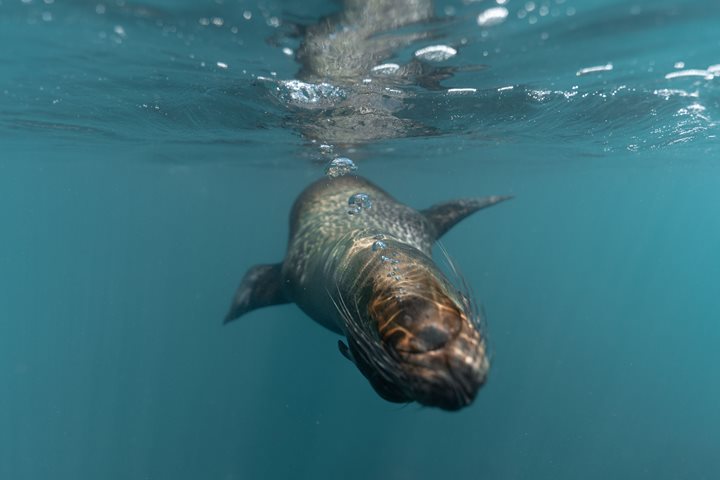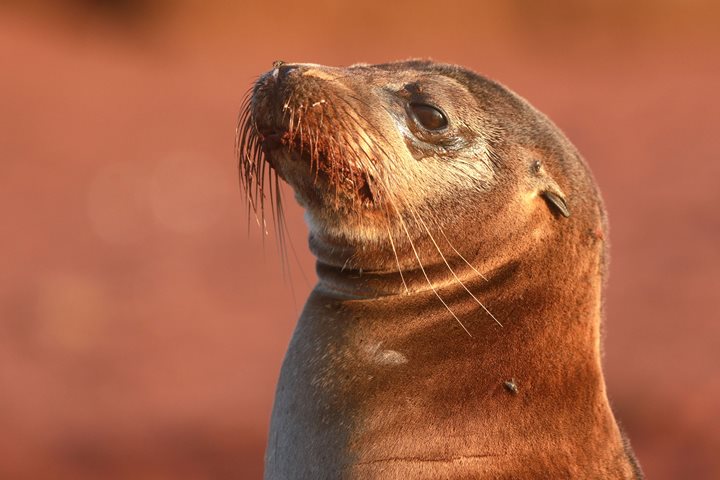Today’s expedition started on an uplifted island formed from volcanic seismic activities on the plates that form the Galapagos platform. This island is home to one the four species of iguanas found in the Galapagos Islands, Conolophus subcristatus, the Galapagos land iguana, also present on other five islands in the center of the Archipelago. The expedition continued in the water with some snorkeling and kayaking where we were able to spot eagle rays, sea lions and white-tipped reef sharks. In the afternoon the ship moved to a new location and we got to hike up Santa Fe Island. This island is one of the best examples of island conservation in which introduced species, such as fire ants and goats, were eradicated and endemic animals to the Galapagos, such as the Espanola tortoise, was introduced to the island to replace the Santa Fe tortoise, which became extinct due to anthropogenic activity. On the hike we were fortunate to spot eight individuals of the Santa Fe land iguana, Conoluphus pallidus. As we waited for Zodiacs to take us back to the boat, we spotted five Galapagos hawks waiting for prey. Today’s expedition was overwhelmingly beautiful, full of life everywhere we looked.
- Daily Expedition Reports
- 04 Jan 2018
Plaza and Santa Fe Island, 1/4/2018, National Geographic Islander
- Aboard the National Geographic Islander
- Galápagos
Gianna Haro, Naturalist
Most of Gianna´s memories seem to be dreams, made on flawless white sandy beaches with black lava rock contours and gorgeous turquoise ocean waters. Most of it happened while barefoot, in an enchanting place that some people regard as an ideal natura...
Read MoreJames Biscardi, Videographer
James Biscardi is a young, ambitious professional photographer and videographer. He is always on the lookout for the next big adventure and “telling the story” through film.
Read MoreShare Report
Related Reports
11/23/2022
Read
National Geographic Islander II
Isabela and Fernandina
Our day began with the chance to point out a lot of interesting geological features as we enjoyed Zodiac tours along a massive flank of Ecuador Volcano on Punta Vicente Roca. In the afternoon, we took a sunny walk on Punta Espinoza on Fernandina Island. We spotted many iguanas, and a bunch of sea lions hanging around, too.
11/22/2022
Read
National Geographic Islander II
North Seymour & Rabida Islands
Relatively small and low compared to neighboring Santa Cruz, North Seymour is located to the north of Baltra. The island is dry with predominantly low shrubs, like prickly pear cacti. The incense trees are bare during the dry season. Seabirds like frigatebirds and blue-footed boobies nest on the island, and sea lions rest on the sand when they are not fishing. Land and marine iguanas also live here. Rabida is in the middle of the archipelago and has a striking red sand beach. We observed a small colony of sea lions of all ages resting or nursing. Behind the beach, American flamingos nest in a brackish lagoon. This island is full of contrasts and wildlife that we enjoyed observing during this day of expedition.









